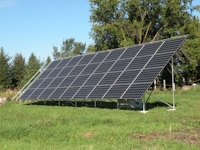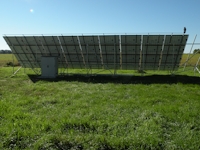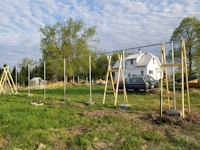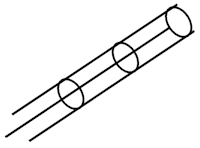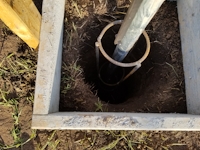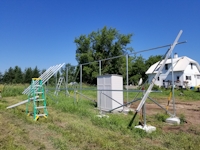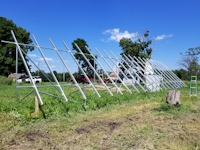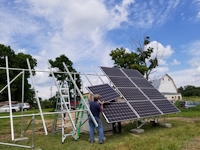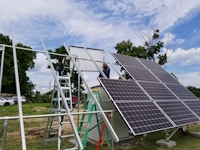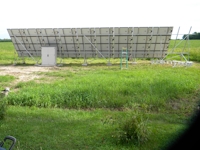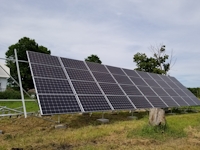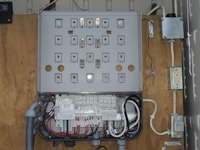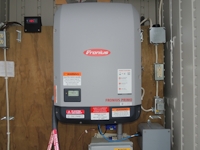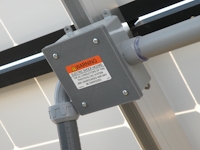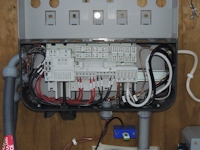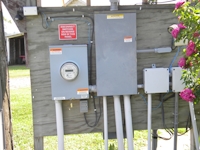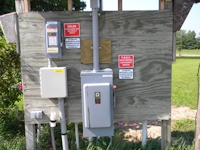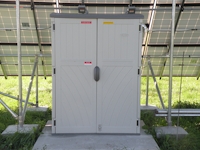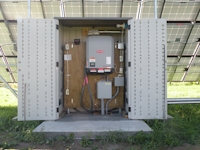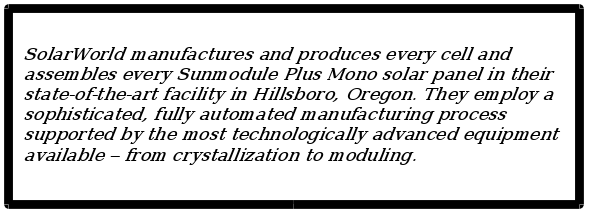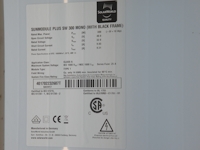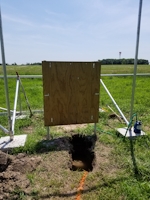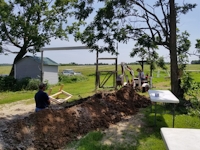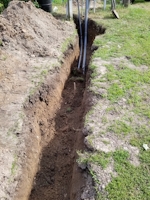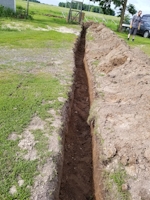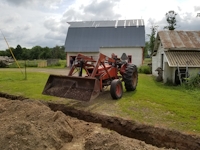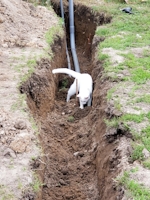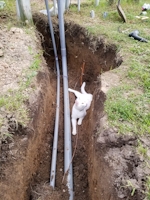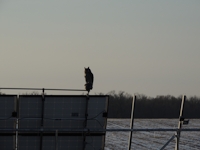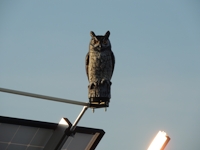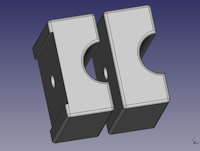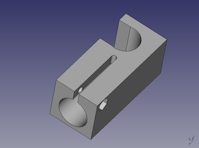Our Do It Yourself Solar Array
Jump to Decisions, Opinions, and Stories
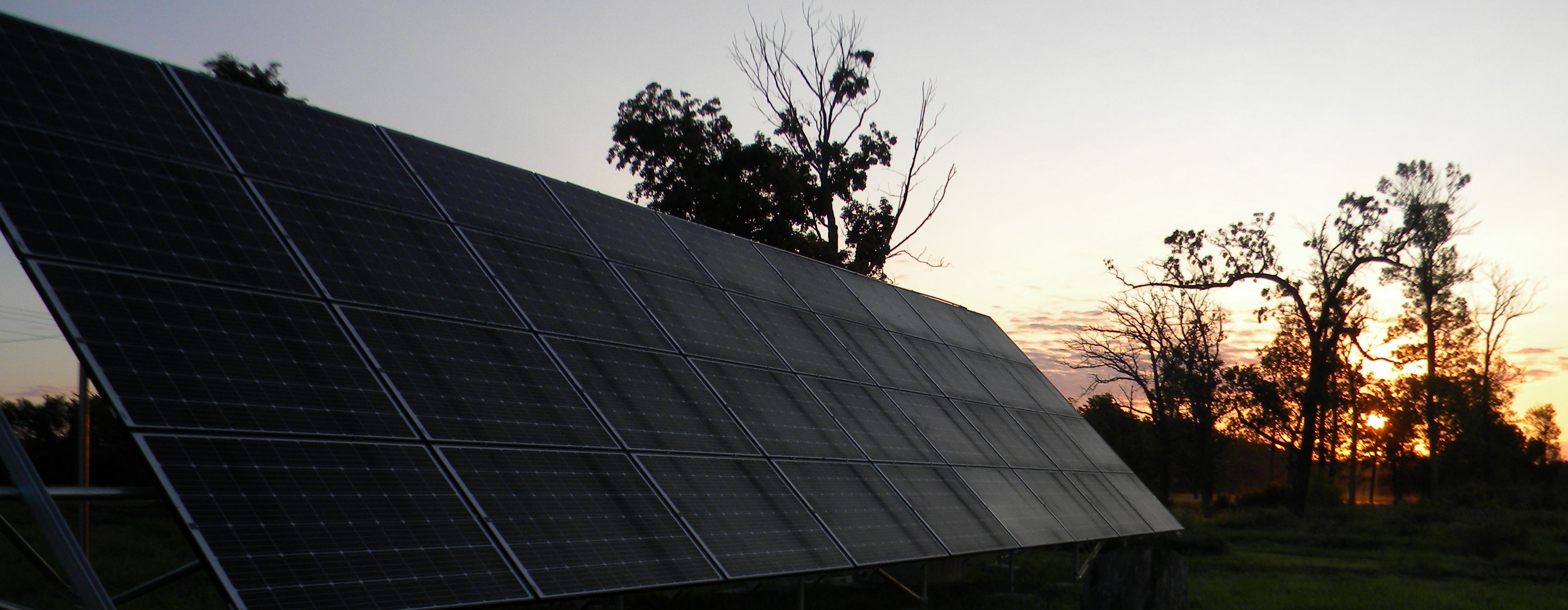 |
|---|
Alternative Renewable Energy is Important,
but it also needs to be practical!
|
A word about my sponsor: |
Disclaimer: This information has been put here in the hope that someone finds it useful, We do not claim to be experts at installing a solar array, nor do we claim that the information you find here is the “best way”. The information that follows is simply how we installed a functioning 10.8 kilowatt array, that is tied to the electric grid and Co-Generates electricity with Polk Burnett Electric Cooperative. I also want to point out that working with various power tools, and working with electricity is hazardous. You need to decide for yourself if you want to do these things. Also here in Wisconsin we can still legally do our own construction and wiring. In your location that might not be true, so please check with your local building codes, if you are considering a project like this.
|
Data from past months,
Sep, 2025 solar performance (PDF) Sep, 2025 Impact on our Electric purchase (PDF) Solstice and Summer vs Winter Chart (PDF)
4.10 Peak KW hrs per day
Spreadsheet in Open Office format.
solar_array_bom.xls
|
|
|
|
|
|
|
|
We have some technical stuff to still work out.
|

|
Time to do the paper work! | 
|
|
|
TIMEOUT! I don’t want to deal with all this mumbo jumbo…
We chose to do it all because we figured, why not try? What do we have to lose? |

|
Approved! |

|
|
|
What we are going to put them on?
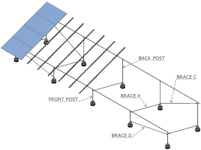
SnapNrack System 
Got Auger? 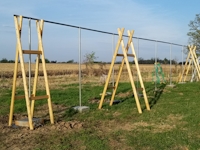
Got Wood? |
|
|
I started by making some crude CAD drawings, to get some idea of how the system would be laid out, and what the angle measurements should be.
Anyone with some basic knowledge of geometry could probably whip these numbers out with a calculator. Anyway, armed with some layout measurements, and a tape measure, my wife and I went out and put some stakes in the ground just as soon as the ground was soft enough to drive a stake into.
We used one of the 21ft pipes for the Horizontal run to suspend the vertical piers with the SnapNrack "tee" fittings, and the "X" support frame. 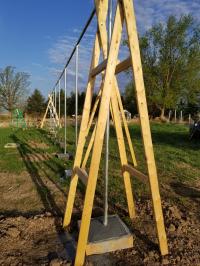
|
|
Installing the ground mount system.
|
|
Suspended vertical piers ready for cement.
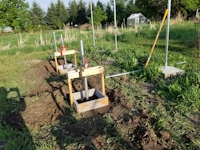
|
Vertical pier with re-rod suspended in drilled hole.
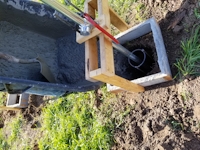
|
Ground mount piers with bracing. 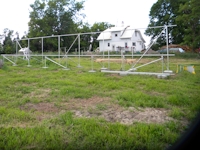
|
Time to rough in the electrical.
|
|
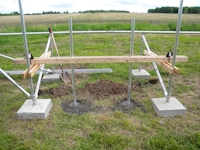
|
|
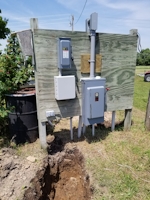
|
NOTE: Part of the co-generation agreement with Polk Burnett Electric, is that they can come on the property and lock out this switch, any time it is necessary to perform work on the grid. The box on the lower left is a junction box that is serving more or less as an adapter, sizing down the 2” conduit to 1” which fits the switch box without modification. There are many ways we could have downsized the conduit. I chose the junction box so that I could leave a loop of extra wire in there just in case I need it in the future. The Box mounted lower on the right side is a disconnect switch that completely shuts off the power coming from the grid. I installed that more for personal preference, and protection then necessity. |
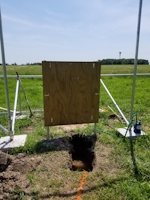
|
|
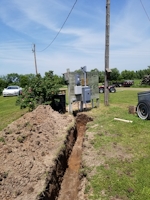
|
NOTE: Please don’t throw caution to the wind here. Call to have any underground systems located before you dig. |

|
|
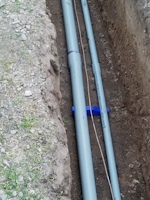
|
|
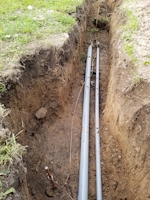
|
Why is grounding important? Properly grounding your system has much more to do with preventing the lightning strike instead of arresting the lightning after it hits. If an electrical system does get hit by lightning, there is very little that can be done to protect or arrest the electrical currents as the voltage generated by the strike drains off. A properly grounded system tends to drain the potential differential energy in a controlled manner, and thus hopefully prevent the lightning strike from ever happening. |
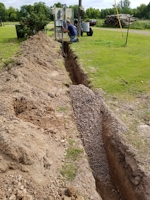
|
|
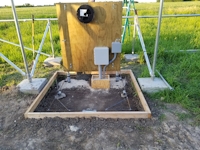
|
NOTE, the small wood box, around the conduit, and the short pieces of PVC around the two poles. The idea here is knowing that the cement slab is going to move around a little bit, due to the frost, we are hoping to isolate the slab from the poles and the conduit to allow the slab to move without putting pressure on the poles and conduit. We’ll see in a few years how that all works out. The PVC was a cut from an extra piece of conduit that I split in half with a hack saw. I then taped it back together around the poles with electrical tape. The re-rod has vertical threaded rods welded to it to eventually bolt down the ‘Fronious Closet’. |
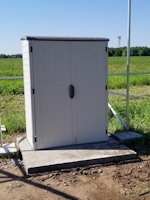
|
|
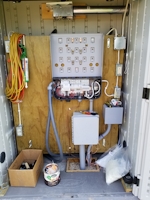
|
The large box with the exposed wiring is the mount for the Fronius solar inverter. The D.C. voltage comes in from the solar panels on the left side. The RED wires are simply black wires covered with red heat shrink to differentiate the positive and negative leads. The A.C. voltage goes out the right side. The large WHITE wire again, is simply a black wire with white heat shrink, to show that it is the neutral wire. The large bare wire is of course the #6 awg ground wire that I mentioned a few pictures up. The smaller wires are the ‘Hot’ (L1) neutral and ground of the small branch circuit to supply power to the outlets and fan. |
Let’s Get’r Done!
|
|
Let’s make these things useful!
| String Theory isn't just to describe the Cosmos |
|
|
| Home Runs aren’t just for Baseball anymore! |
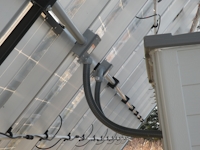
These are the Home Run conduits leading to the junction box that transition to the flexible conduits that go to the Fronius inverter. These conduits are anchored to the back side of the panel mount rails using the snap in bolt mounts, and the conduit clamps that we 3D printed. |
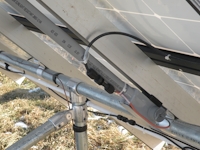
If you look closely at the picture to the left you can see the conduit ends at a TEE fitting. We used the TEE fitting to extend to end fittings where we brought the Home Run lines into the conduit. We printed the plug below to serve as kind of a grommet. We simply ‘glued’ them in with silicone sealer. |
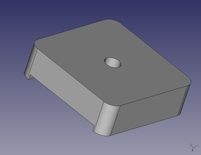
snap-n-rack_conduit_pad_01.stl This printed spacer was used with the snap in rail anchor below, to mount all of the conduit fittings, in order to stand them off of the rails the same distance that the conduit clamps hold the conduit off of the rails. |
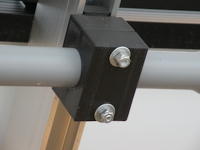
Here we have the conduit clamp assembled with 1/4” bolts held by the SnapNrack mount, which you can see up inside the rail. We used nyloc nuts, but that probably wouldn’t really matter. |
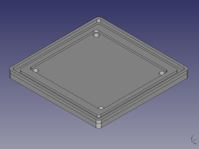
conduit_j_box_lid_01.stl The Junction box is actually a switch, or outlet box. I was not able to find blank covers for them, so I printed covers to fit. |
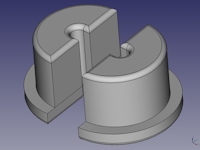
conduit_wire_plug_01.stl A 3D printed plug that we pushed into the conduit fitting, to protect the wire and keep stuff out of the conduit. |
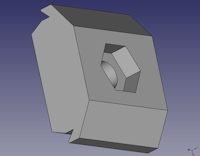
snap-n-rack_mnt_base_01.stl This is the printed snap in anchor that was used for mounting all the Home Run components to the rails. We simply inserted the right length 1/4” bolt so that the head was captured in the hex pocket. |
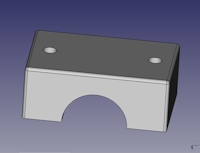
snap-n-rack_conduit_clamp_01.stl |
|
|
|
| Connecting the panels into strings |
|
|
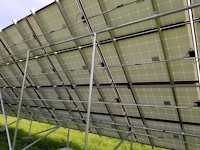
|
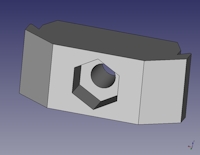
s-n-r_pvc_mnt_base_02.stl 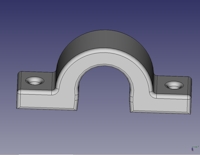
s-n-r_pvc_wire_support_clamp_01.stl |
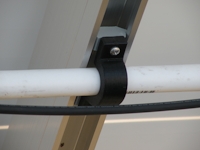
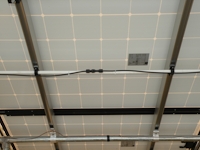
|
|
Turn on the Sun! Let's generate some power!
NOT QUITE YET, but almost! |
|
|
|
All comments are welcome!
Positive or Negative. If you would like to make a comment,
please E-mail me at dean@crexrealty.com.
Thank-you for taking the time to visit!
Other fun pages on this site
Crex MeadowsGrantsburg Parade | Thoreson Park | The Dark Side
Free CD Rom | Ramona's Craft Page
Decisions, Opinions, and Stories…
|
|
|

